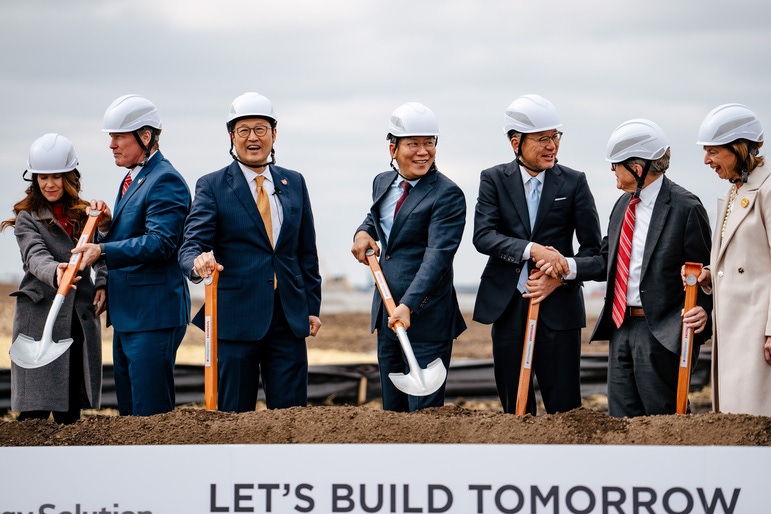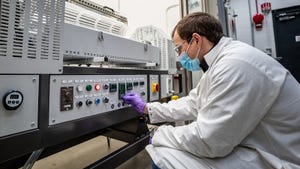LG Energy Solution Expansion Continues As EV Demand Softens
Under a new CEO, LGES is adjusting its strategy in the face of expected cooling of EV demand—but is going forward with expansion goals.
December 6, 2023

With a new expansion-minded CEO at the helm, the next two years will be quite busy for South Korean EV battery maker LG Energy Solution (LGES), with plenty of US capacity expansion and joint ventures on tap.
In what Korean media are calling a “generational shift,” LGES President Kim Dong-Myung was appointed CEO by the board of directors to replace Kwon Young-Soo, who served LG for 44 years.
Kim is a “chemical specialist who has been leading the aggressive overseas expansion in the burgeoning EV market in recent years,” The Korea Herald reported. He formerly headed the company’s advanced automotive battery division. He joined LGES, then a business unit of LG Chem, in 1998 to work at a battery research center. In 2020, that unit was spun off into LGES.
Changing of the guard
“The new CEO Kim Dong-Myung has a proven track record in the battery business and entrepreneurial success,” LGES said in a statement. “At a time like this, Kim is expected to show leadership in making LG Energy Solution the No. 1 global company.”
Kwon’s retirement “made headlines in the nation’s tech industry,” The Korea Times reported, “as he exuded massive influence in enhancing Korea’s global footing in the battery industry. He took office as the chief of the battery arm of LG Group back in November 2021, and stood at the forefront in listing the company on the main bourse and turning it into the nation’s second-most valuable firm by market capitalization.”
In addition to naming Kim as the new CEO, the company tapped Choi Seung-Don, head of automotive battery R&D, as vice president.
New strategies for cooling demand
Reporting a 7.5% year-over-year revenue increase for its third quarter in October, as well as a 40.1% jump in profit, LGES is adjusting its strategy to cope with some expected cooling in EV demand — particularly in Europe and China. Nevertheless, the company said it is on track to “expedite the global EV transition,” with an annual production capacity of 200 gigawatt hours projected to expand to 300 gigawatt hours by the end of this year.
With demand for EVs remaining solid in North America, LGES plans to enhance product safety by advancing its thermal management technology by optimizing design and developing a cooling system for modules and packs. LGES also plans to improve its high-nickel NCMA batteries by including more than 90% nickel and achieving charging times of less than 15 minutes by using high-capacity, high-efficiency silicon anodes. The company is also enhancing production for the mid-to-low-end EV segment.
Multiple US projects
On the larger operational scale, LGES has multiple projects in the works throughout the United States, including:
A $3 billion investment to install new production lines at its plant in Holland, MI, as part of a 10-year supply agreement for high-nickel NCMA pouch-type cells for Toyota Motor North America. Work on the plant is scheduled to be completed in 2025. The modules will initially supply a Toyota plant in Kentucky that is to begin building a new EV in 2025. Annual capacity at the expanded LGES production facility will be 20 gigawatt hours. “We’re excited to have Toyota, the best-selling global automaker, as our new customer,” enthused outgoing LGES CEO Kwon. “The agreement also presents another big opportunity for us to strengthen our production capacity in North America, thereby bringing more real-life, large-scale progress toward electrification in the region.”
A joint venture with Honda to build an EV battery plant of more than 2 million square feet In Fayette County, Ohio. The initial investment of $3.5 billion is expected to grow to $4.4 billion, with the facility to be completed by the end of 2024. Annual production capacity is expected to be 40 gigawatt hours. LGES batteries will support Honda EVs built in North America.
Production expansion at its wholly-owned Arizona battery plant to 36 gigawatt hours annually, up from 27 gigawatt hours. By late 2025, the plant is to begin producing energy-dense 46-Series cylindrical battery cells that allow longer driving range.
In Asia, LGES is establishing a pilot production line for its 46-series cylindrical batteries in Ochang, Korea; production is expected to begin in the second half of 2024. Meanwhile, the company’s facility in Nanjing, China, will become the main production hub for 2170 cylindrical batteries.
“In response to constantly evolving and diversified market needs, we will secure differentiated production competitiveness across all segments, ranging from premium and mainstream to affordable,” said Kwon. “This will become our core engine for consistent mid- to long-term growth, upon which we will become a global leader providing the world-best value to our customers.”
EV Battery Leaders is a series of occasional features profiling the top makers of EV batteries worldwide.
About the Author(s)
You May Also Like





